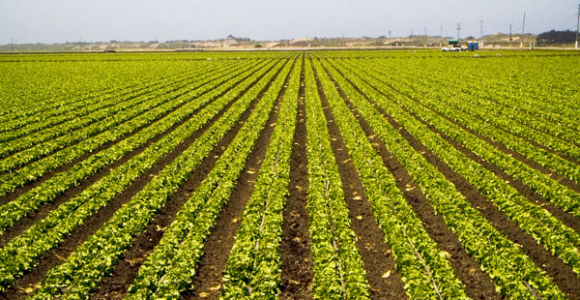
Farm near San Jose. (Photo Credit: Liji Jinaraj/Flickr)
In an effort to meet the challenges posed by climate change, California is working toward reducing greenhouse gas emissions while trying to maintain its open spaces and a healthy agricultural economy. And members of the Summit’s Working Landscapes Action Team are making sure that their voice is heard through this process.
“What we’re after is to look at the whole urban-rural landscape in a more comprehensive way and find better ways to make the best use of our available resources, including our farmland” said Glenda Humiston, a Working Landscapes Action Team co-lead and Director of the USDA California Rural Development office.
Earlier this year, the California Strategic Growth Council (SGC) released a draft of the Grant Guidelines & Applications for the new California Sustainable Agricultural Lands Conservation program (SALC). The public was asked to comment and the Working Landscapes Action Team went into action.
SALC was established to support California’s climate adaptation and greenhouse gas emission goals, directed by AB32 and the California Global Warming Solutions Act of 2006. The program will make strategic investments that protect agricultural lands by working to prevent development in critical agricultural lands. The grants through SALC will fund plans, conservation acquisitions and incentives to work toward a reduction in greenhouse gas emissions connected with agricultural lands.
The Working Landscapes Action Team wants to make sure that SALC’s investments are in line with its own goals, including the creation of a roadmap for triple-bottom-line prosperity (social, economic and environmental progress), the theme of the 2014 Economic Summit. From the letter:
Land use decisions are economic decisions, so a better understanding of the economics of agriculture and food, land, management and stewardship, and ecosystem services is key to informing better decisions about conservation strategies and markets for products and services provided by open land. USDA Rural Development recommends that the SGC grants for agricultural preservation be broadened to explicitly include supporting an economically robust rural and agricultural economy, which by definition includes recognition of the role of prime farmland.
Humiston, who is one of the letter’s signatories, explained one of the main concerns with the draft: “The initial proposed draft is largely just focused on preserving farmland, using a lot of traditional tools like easements and the Williamson Act.” The Williamson Act enables local governments to enter into contracts with private landowners for the purpose of restricting specific parcels of land to agricultural or related open space use in return for lower property tax assessments.
What is problematic with that method of measuring the value of farmland is that it’s not comprehensive enough, explained Humiston, not in an era of big data and sophisiticated land modeling and planning software.
“And I think many of us on the state Economic Summit, particularly the Working Landscapes Action Team have realized over the past several years, the importance of tying the eco-system services, i.e. producing food and fiber–that’s very important–but also the economic viability and the social and cultural aspects of it all and really tying it together in that people, planet and prosperity – the triple-bottom-line.”
The next steps with the draft Grant Guidelines & Application will most likely be hearings and meetings between the SGC and interested parties such as the Working Landscapes Action Team.

